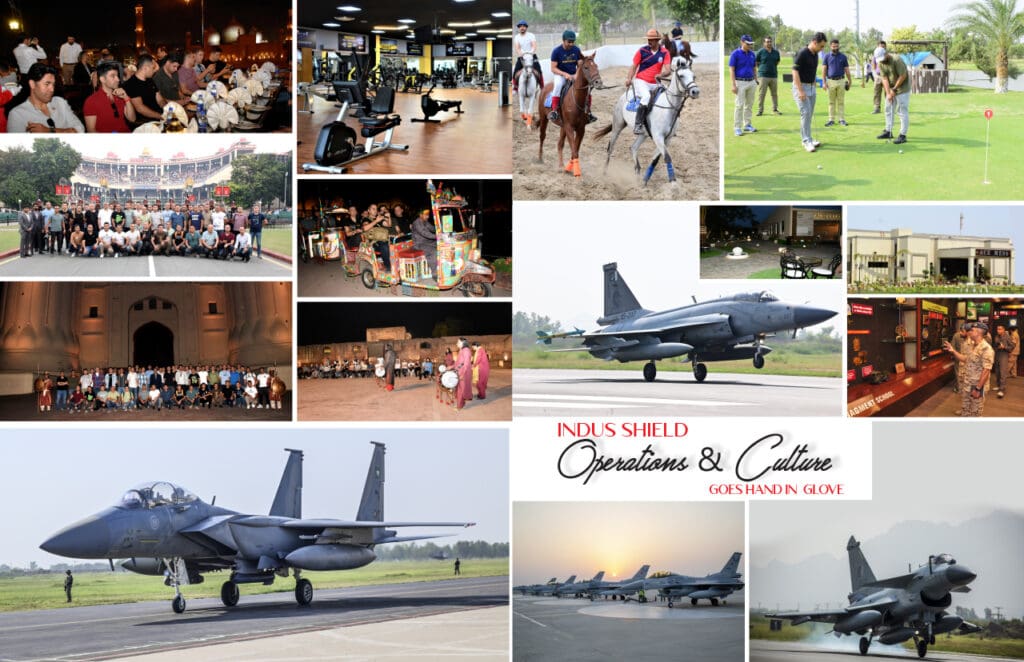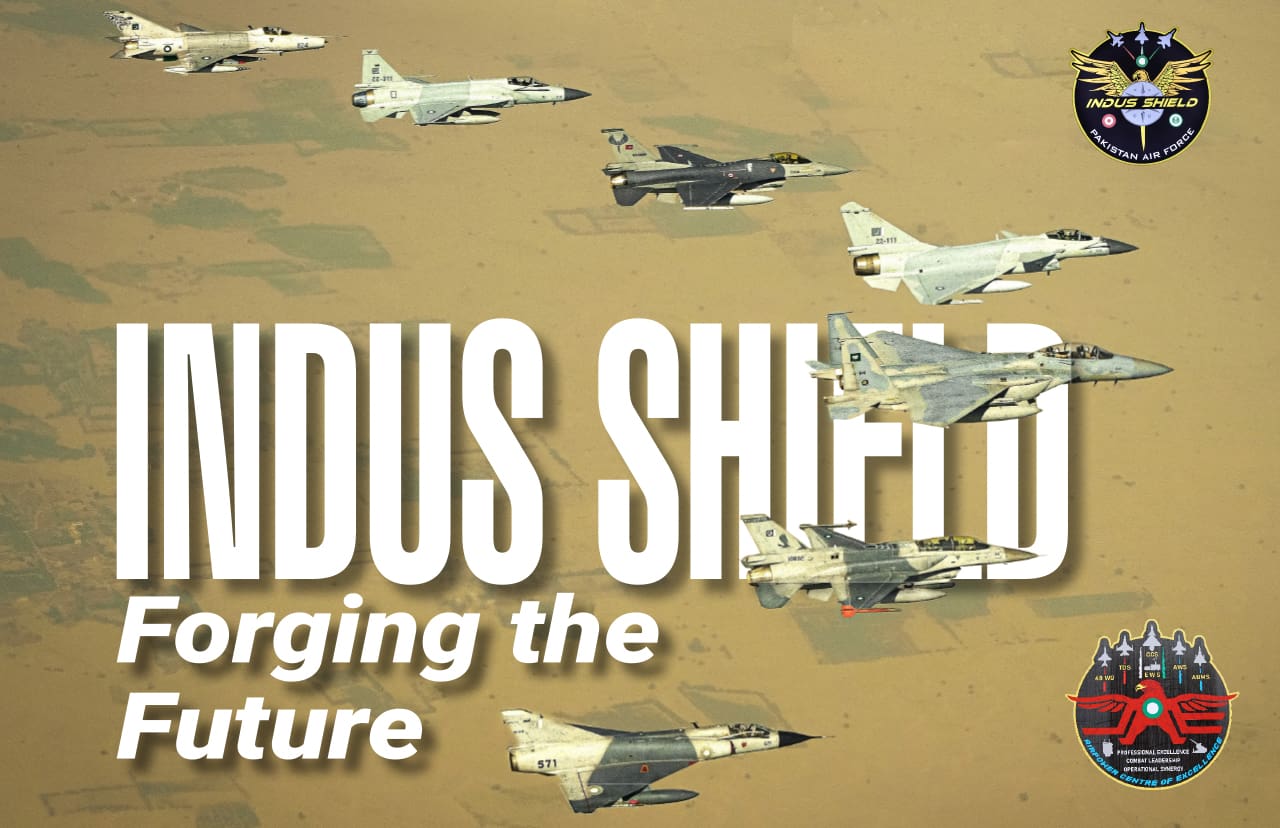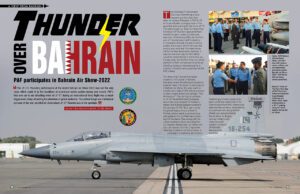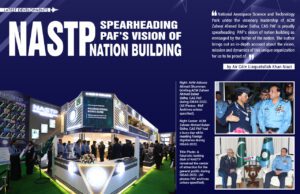In the heart of chaos, where the clash of steel meets the cries of the valiant, where the very earth trembles under the weight of impending battle, therein lies the theatre of war. It is a relentless stage where destinies are forged with every thunderous beat of the war drums while the fate of nations, hangs in the balance. Warfare is the only constant in human history, with continuous escalation between tribes, nations and empires. The tools of war have evolved from muskets to missiles, from spears to hypersonic missiles and from hand to hand combat to space-based warfare. Yet harnessing these capabilities still entails the major caveat of training the necessary human resource; capable of exploiting the full potential offered by this changing character of war and utilizing it synergistically.
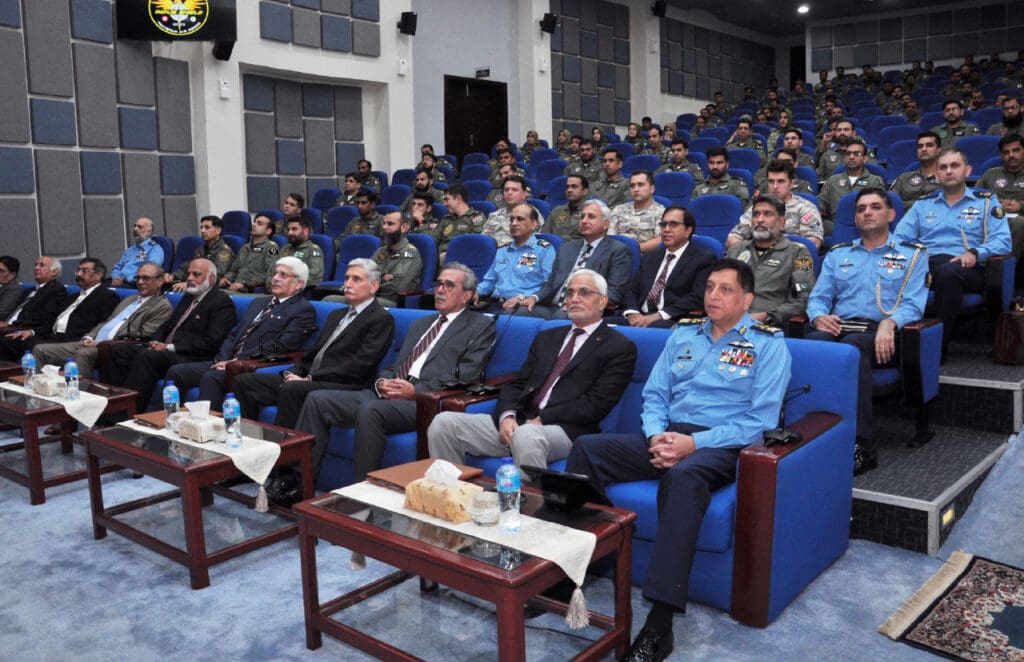
Modern warfare demands seamless collaboration across all domains and peripheral ‘good to have’ competencies such as Cyber-attack, Space exploitation and the control of the Electromagnetic spectrum have become core domains on whom the fate of the battle hangs. Therefore, as the core domains were redefined, there remained a strong need to bridge the gap between PAF’s existing capabilities and moving towards Next Generation Airforce parameters. Pakistan’s founding father Quaid e Azam Muhammed Ali Jinnah said ‘A country without a strong air force is at the mercy of any aggressor. Pakistan must build up, its air force quickly. It must be an efficient air force. Second to None.’ To remain Second to None, PAF’s rapid modernization campaign has bridged the gap with a renewed approach to procurements and quickly integrated the latest acquisitions to achieve the desired employment philosophy. The ever-evolving battlespace provides a unique problem set of integrating all assets synergistically towards a common goal and the solution to this problem was manifested in the form of Exercise Indus Shield, 2023. The exercise was conducted at PAF Air Power Centre of Excellence from 7th – 24th October 2023 and saw the participation of 14 countries including Fighter Squadrons from the Kingdom of Saudi Arabia and Republic of Türkiye.
The exercise was conducted to maximize the warfighting potential of own and friendly forces in the full spectrum of air operations through synergistic employment of multi-domain capabilities in an integrated training environment. Exercise Indus Shield offered a unique employment of extended range BVR (Beyond Visual Range) employment in an EA degraded environment, UAS (Unmand Aerial System) employment in Manned – Unmanned Teaming (MUM-T) and ISR roles and offensive against Integrated Air Defense Systems (IADS) through sustained SEAD (Supression of Enemy Air Deffence) campaigns. The exercise saw the employment of J-10C, JF-17 Blk-III and F-16 Block-52 fighters from PAF, with and against RSAF F-15SA and TuRAF F-16s. These state-of-the-art fighters complemented by Long Range BVRs and HIMADS took the fight to the enemy at ranges far beyond previously conceived.
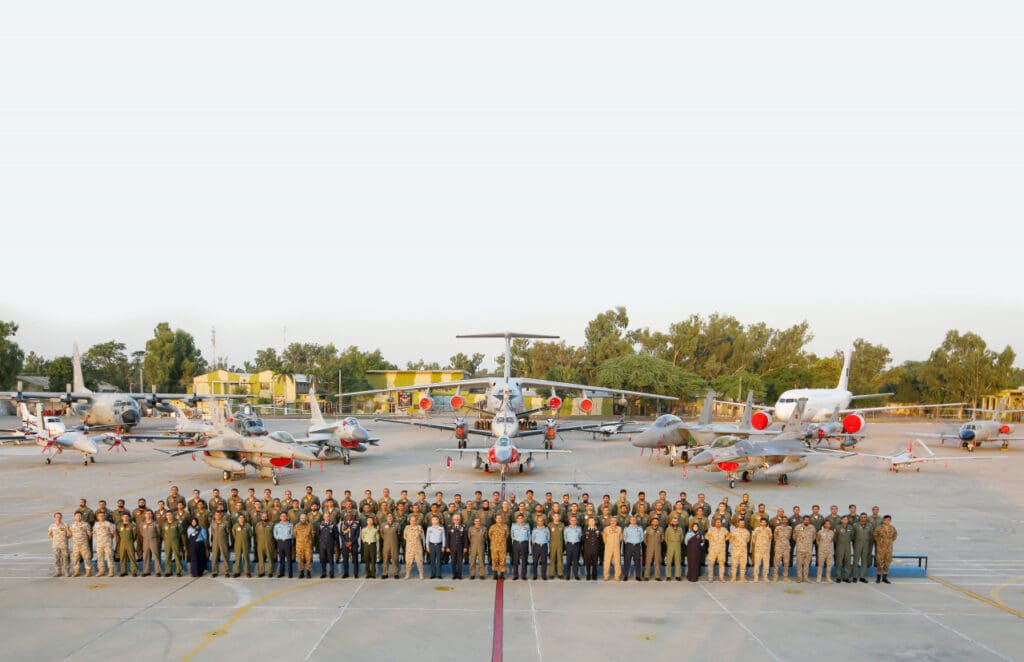
Thus, giving a unique opportunity for simulation of the latest BVRs in a Blue Vs Red scenario in a contested degraded operating environment. The exercise provided a holistic curriculum coupled with scenario-based realistic Air Tasking Orders (ATO) with an embedded air campaign construct. The scenario provided a platform to employ proven and tested technologies, the most current tactics and near-realistic training under a dense electromagnetic operational environment. Exercise Indus Shield additionally offered certain value additions that are matchless in comparison to any other international exercise. The size, complexity and tactical aids available in the ACE training area, offer a simulated training environment that is hard to match. At the center of the area lies the Electronic Warfare Test and Training Range (EWTTR) and Air to Surface Weapon Ranges which house numerous SAMs and air defence assets.
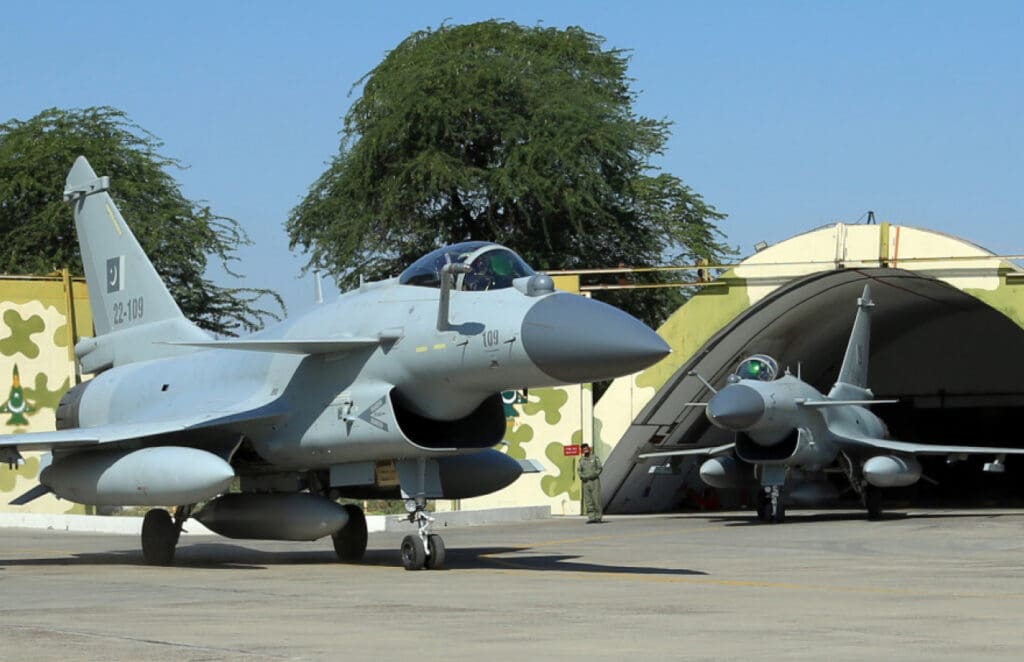
This coupled with surface level till unlimited altitude availability, full radar coverage and mapped out flat terrain allowing nap of the earth makes the ACE training area unique in multiple facets. Additionally, the Joint Strategic Simulation Centre (JSSC) at PAF ACE offers the capacity to translate the science of war in a data-intensive environment with customized models, highly flexible virtual training scenarios and real-time battle tracking. It offers quality training for all tiers of ‘Combat Crew’ as its open architecture affords flexible integration and inter-operability of all modern warfighting elements. JSSC also facilitates campaign analyses through comprehensive after-action replay and analysis software.
A Concerted Academic Training was conducted in a block-building manner and complemented through discussions on tactical subjects while incorporating a technology-infused curriculum. Thus, laying a solid foundation for enhancing cross-domain knowledge. The exercise consists of 2 parts namely, Applied and Synthetic Training Phase. The Applied Phase consisted of the Al-Miraj Phase simulating low-intensity conflict which seamlessly transitioned into conventional war in the form of the Grand Slam Phase.
The Al-Miraj Phase was conducted to train the exercise participants in a DACT (Dissimilar Air Combat Training) Environment for refining tactics against contemporary threats while promoting mutual learning. The phase contours included Mix Bag Combat in multi-bogey scenarios whereby blue force was tasked to execute DCA (Defensive Counter Air) alongside Counter Terrorism Ops training through the availability of diverse topography including urban, mountainous and desert terrains and culminated in live weapon deliveries at Air to Surface Weapons range. Red Air flown by the Aggressor Squadron gradually increased the level of difficulty imposed upon Blue Air through the integration of next-generation missiles and sensor fusion as the Phase progressed to punish any errors by Blue Land.
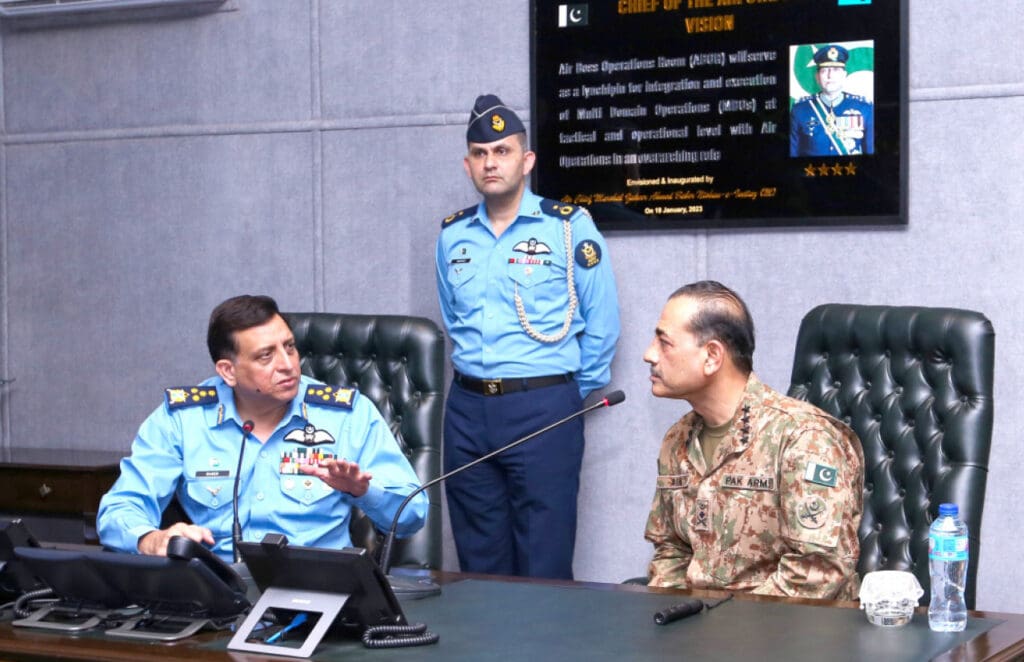
The Grand Slam Phase was conducted in the last week of the exercise and was designed to enhance the combat potential of exercise participants through Large Force Employment (LFE) tactics in a contested environment. This phase was designed to consolidate the inter-operability amongst combat and combat support assets and involved offensive and defensive counter-air and counter-land operations supplemented by multi-domain assets. The standout attribute of the exercise remained the application of Electromagnetic Spectrum Operations (EMSO), cyber and space-based operations in support of the air campaign. Blue LFE in Grand Slam saw the employment of J-10s, F-15s and JF-17 Blk3 in the Sweep role utilizing multiple AESA capable platforms to disrupt and destroy Red Defensive Counter Air response.
Akinci UAS alongside F-16s were utilized for close support to ground forces while JF-17 conducted Suppression of Enemy Air Defence (SEAD). Emerging domains were integrated to mitigate contemporary training voids, create a qualifying environment and provide the most realistic replication of the modern battlespace while employing SCAR, Fighter Integrated Transport Operations (FITOPS) and counter SAM maneuvering missions were conducted using EWTTR (Electronic Warfare Test and Training Range). The exposure gained through these role-specific force application exercises provided the real-world skill sets necessary to achieve the commander’s intent when and where required.
The Synthetic Training Phase titled ‘Virtual Shield’ offered a Live Virtual Construct (LVC) LFE exercise conducted in the JSSC. Exercise Virtual Shield constituted of a multitude of tactical scenarios including Counter Terror (CT), Close Support (CS) and Time Sensitive Targeting (TST) to generate a virtual solution to realistic tactical problems, to war game, the outcome and cost-effectively generate valid lessons. Emerging disruptive and niche technologies such as SWARM technology, loitering munitions and killer drones were employed during the Virtual Exercise to generate desired effects.
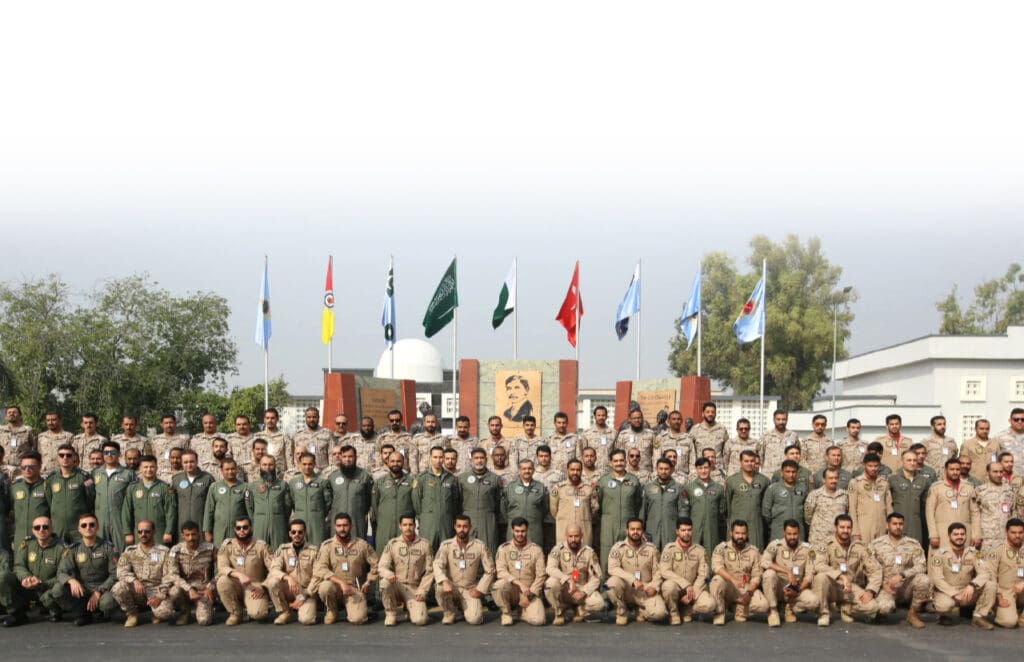
Additionally, sensor-driven battlefield transparency at PAF ACE enhanced the situational awareness of the Air Battle Managers (ABM) to undertake informed decision-making and shape the battlefield. Air Boss Ops Room (ABOR) enabled live monitoring of the exercises thus ensuring safety and realistic scenario generation through real-time kill elimination. These operations were run by an efficient team of ABMs aided by a Range Training Officer (RTO), Cyber coordinator, ISR and EMSO officer under an Air Boss. PAF remains fully cognizant of the importance of cyberspace to use information-enabled command structures and combat capabilities to build information security across a wide array of domains.
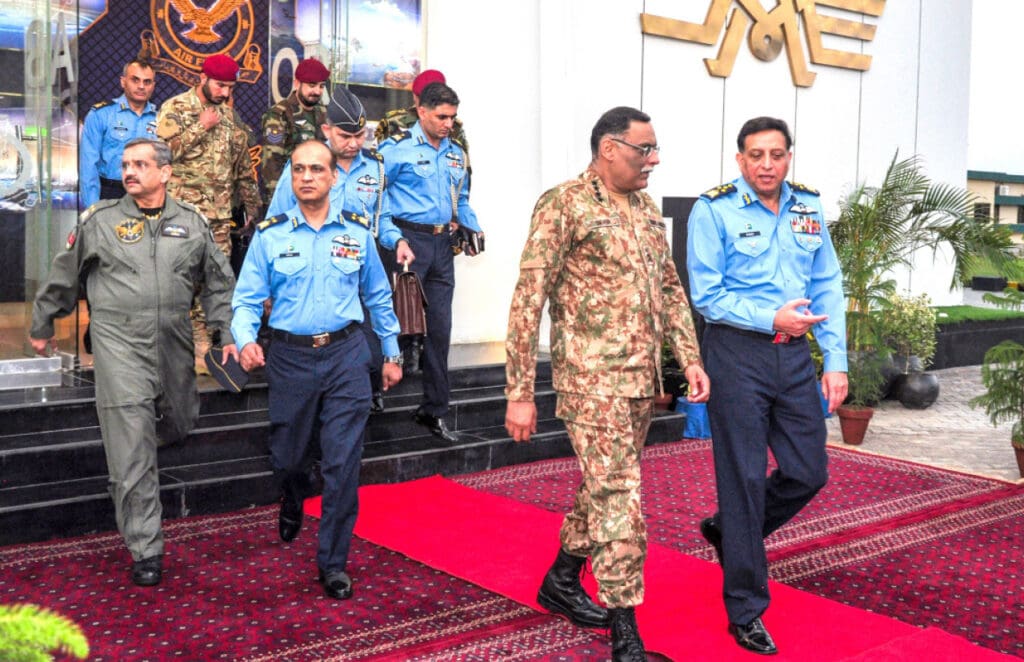
Exercise Indus Shield therefore saw the utilization of next-generation technological innovations such as Electromagnetic domination and cross-domain cyber-attack in support of air operations whereby the Cyber Ops Room (CYBOR) was utilized to degrade the adversary’s response through cyber-attack. Space which influences the outcome of all military operations through the availability of capabilities such as SATCOM, PNT (Positioning, Navigation, Timing) services and space based ISR was utilized to augment the Find, Fix, Track, Target, Engage and Assess (F2T2EA) dynamic targeting cycle. These cross domain capabilities were integrated under a network of system of systems to give a unified battle space awareness reducing the all important matrix of time for real time decision making.
Eternal vigilance is the cost of freedom and training our manpower to undertake multi-domain operations in a time-compressed environment against a contiguous, near peer adversary requires value-based character and leadership skills that ensure integrity, discipline and teamwork in wartime. The thought resulted in the creation of PAF ACE as a hotbed of PAF’s tactical employment where the combat crew is groomed into seasoned weapon system specialists. In its proud history, ACE has welcomed hundreds of international participants and conducted numerous international exercises such as Aces Meet, Shaheen and Falcon Talon to formulate tactical cohesion through the conduct of Composite Air Operations against conventional and sub-conventional threats. Revamped training curriculum and the frequent conduct of national and international exercises enhance the tactical acumen of PAF’s combat crew while sharpening their ability to get the job done as and when required.
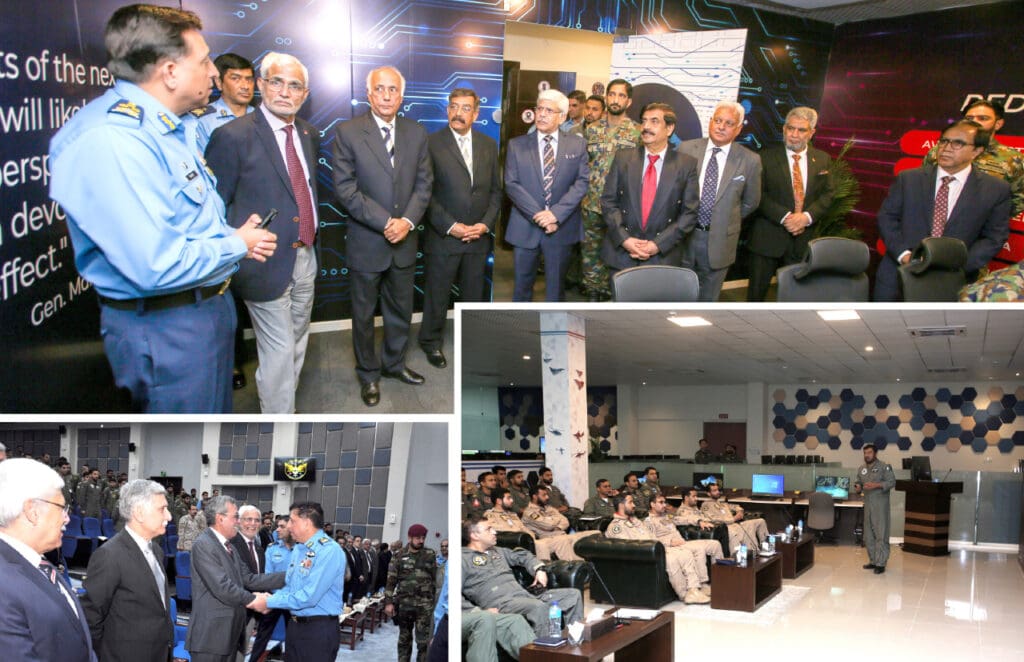
PAF ACE offers a platform that combines the sum total of all PAF endeavors in providing Information Ascendancy, Unparalleled Battlefield Transparency and Augmented Situational Awareness which translates into Superior Decision-making during Offensive and Defensive Multi-Domain Command & Control Operations.
This ensures the superiority of the tactical orientation of PAF combat crew in any foreseeable future conflict. The facilities available at ACE Mess offered the most conducive stay for the Exercise Participants who utilized their leisure time by engaging in the plethora of available extra-curricular and entertainment activities. Participants from RSAF and TuRAF participated regularly in Futsal matches alongside Horse Riding alongside long hours at the gym to keep up their G-tolerance.
During the exercise, participants also visited the historic sites in Lahore such as Minar-e-Pakistan, Badshahi Mosque and Lahore Fort and got a greater sense of Pakistani culture and hospitality. The visitors thoroughly enjoyed the visit to the Wagah border where they got a chance to visit the traditional Flag lowering ceremony amidst the surge of patriotic fervour exhibited by the local crowds. The participants also joined the celebration on the international night with great panache, which included stage performances depicting Pakistani cultural heritage along with delicious Pakistani food.
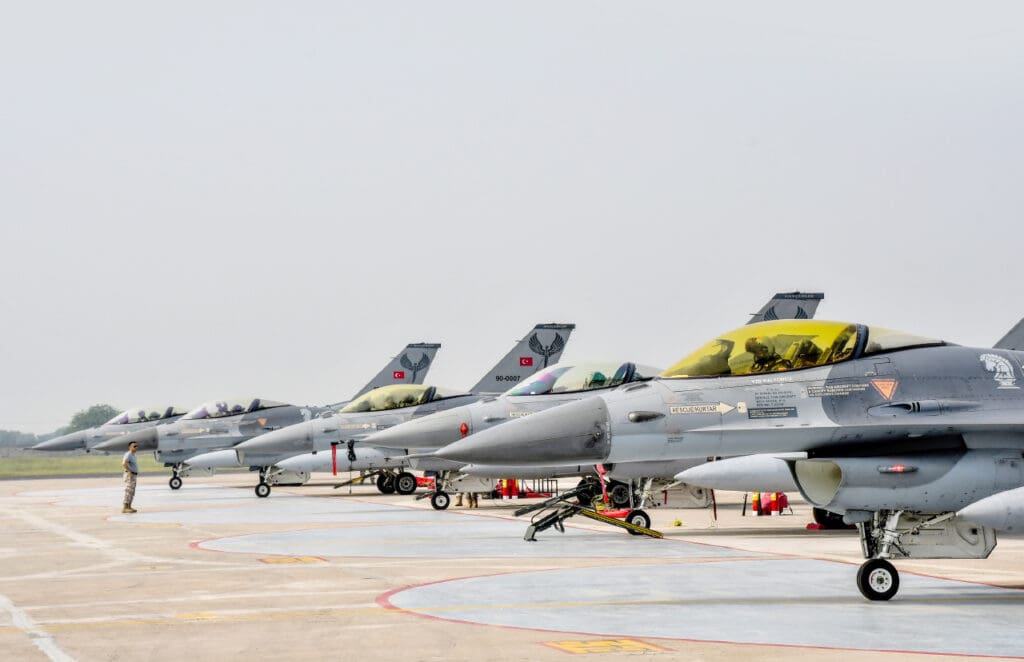
The future conflict will require automation and information ascendancy through agility in Artificial Intelligence (AI), autonomy, cyber domain and space. Seamless air power employment will require net-centricity and a Common Operating Picture (COP) between the sensor and the shooter for a coherent and cohesive response.
The advancements in a wide array of full-spectrum warfighting capabilities which when augmented by synthetic training ecosystems ensures that the Pakistan Air Force never goes into battle unprepared and always upholds the sacred trust placed on it by the nation. This operational model while providing an integrated system of systems experience also economizes the use of futuristic technologies keeping the mind the cost of maintaining a cutting-edge Air Force.
Amidst the blue skies, the borders are blurred amidst the roar of jet engines and the only thing that remains in the mind of the Pilot is the mission, the target or the asset being protected. This forges a unique tapestry of brotherhood and camaraderie amongst the participants who come from diverse nationalities and backgrounds yet are united during the Exercise under a common Indus Coalition.
The aim of International Exercises such as Indus Shield remains the building of friendships and creating bonds across geopolitical lines through mutual learning and sharing of experiences. PAF continues to forge its destiny as it braces for the future and looks forward to welcoming our brothers again in the Exercise Indus Shield 2024 so that we may further strengthen the bonds of friendship between the participating nations and forever remain as brothers in arms.
